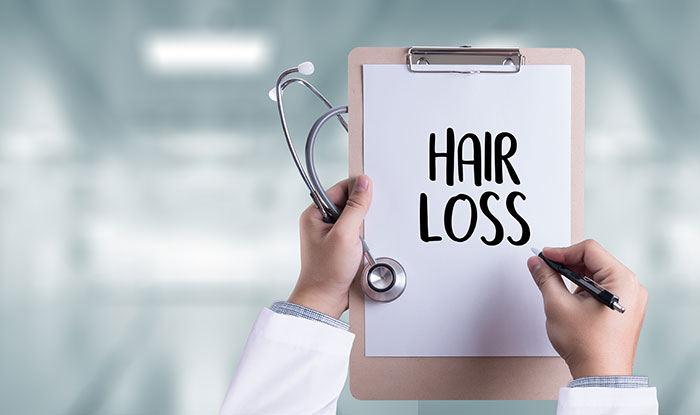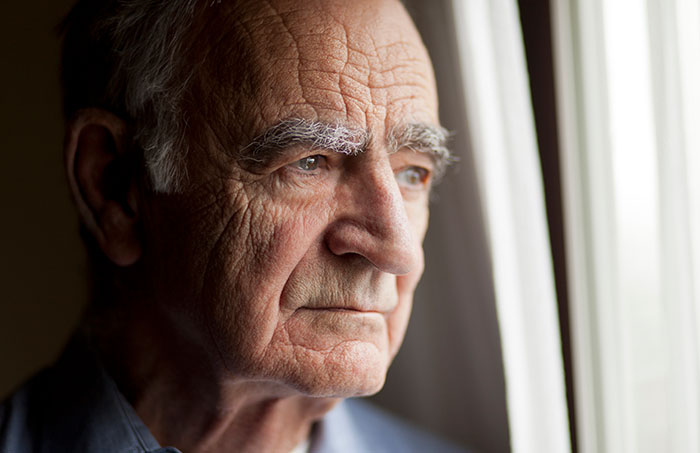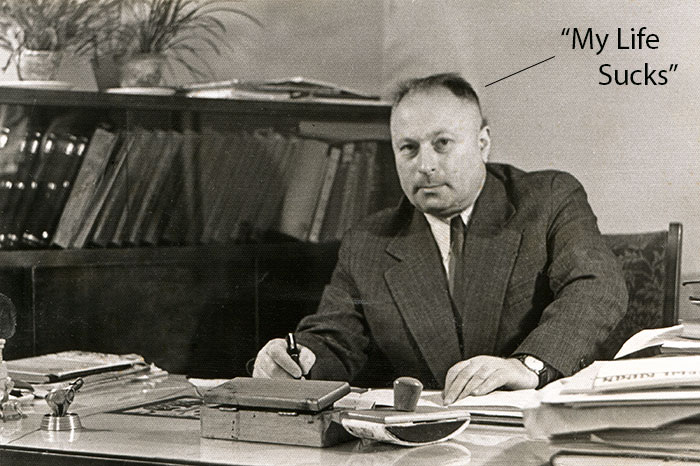Embarrassment, depression, and pessimism seem to rule the mindset of most hair loss sufferers. This editorial written by the founder of HairlossTalk.com addresses some of these emotions, and gives a look at why you should be hopeful. Gain a new perspective on hair loss.
Its a big deal to you, and that’s Okay
“Screw em!” … one of my balding friends says to me.
“Its a big deal to me, and it would be a big deal to them too. Who cares what they think.”
It saddens me every day I read new posts on my forums. People so upset. So depressed.
As crazy as it sounds, hair loss actually is a condition that can send people into such a torrent of despair that you’d think it was a life threatening disease. No doubt you’ve heard people make fun of it for that exact reason.

What’s your Diagnosis. Hair Loss?
“Relax! It’s not like you’re DYING”. What’s your diagnosis? Hair loss? Go home. You’re fine.
You just want to tell them to shut up and stick their head in a toilet, don’t you? I know the feeling. They don’t get it. Then for about 3 seconds you feel embarrassed.
“Wait a second… why am I whining like a baby? I could be dying of Leukemia”.
That lasts about 3 seconds, and then you’re depressed again. Amazing how that works. Well there’s a reason why it makes you feel like you’ve got no stamina for life, and you shouldn’t be ashamed of it.
Hair Loss is Not a Death Sentence, But…
You don’t have to be dying to be strongly affected by something. Look at it from another point of view. Tragedy can come in many forms, and everything is relative. To a little kid who wants a cookie, not having a cookie can bring him emotional pain that is equivalent to a thousand spankings.
Why? Because in his simple life, that’s a major thing. We don’t fault him for it either do we?
In an otherwise healthy person’s life who has everything going for them, hair loss can be an extremely detrimental, unwelcome, and unexpected sudden roadblock.

Chicks Dig Balding Guys?
To someone who does not have cancer, is finding someone special really that strange of a priority? And being keenly aware that they’ve got to look good to accomplish that?
Some users on HairLossTalk are still in high school. Others are still in college, competing for acceptance among peers, or fresh out of college and trying to land their first jobs. Or maybe they’re 25 … or even 35 and have to compete in their profession to make a living and put food on the table.
For an otherwise healthy person who truly believes their chances at happiness are at risk because of a “deformity” like baldness … cancer may seem like an equivalent. Put another way: everything is relative to what else is going on in your life.
If cancer comes your way, you will deal with it, and your priorities will change accordingly. But right now? The fear of being alone forever, or losing your self esteem, confidence, and possibly the edge in your career can be a devastatingly scary possibility.
For that person, the thought of going bald may be the biggest challenge they know, and they have absolutely no reason to be ashamed about looking at it that way.
Wanting to Look your Best: Vanity?
Some may tell you that you’re being vain. Or that your focus on your hair is a sign of weakness. But you’re no more vain or weak than they are for buying the latest trends in clothing.
You’re no more “weak” than someone who hits the gym 14 times a week because they want to get “swoll”. Everybody tries to look their best. And hair loss in both men and women is a serious style issue. And it should be treated that way.
Losing your hair has some other very deep effects on people though. Over time, the loss of hair can age your appearance significantly faster than normal. But even in the first week of thinning hair, your own view of yourself can be “aged” by decades.

How I viewed myself at age 25 when I started losing hair.
I remember being utterly terrified to fill my Propecia prescription at the pharmacy. Embarrassed to even talk to the pharmacist. What a humiliating and depressing experience.
In my mind I associated hair loss with aging. I’d barely finished being a kid and here I was next to the the 80 year old picking up his prostate medication. And we were taking the same damn drug. Finasteride: used for both hair loss and an enlarged prostate!
Doing something about it is considered embarrassing. But that perspective is wrong! People want to look their best. You don’t owe anyone any explanations. You don’t have any reason to feel stupid.
In fact, statistics state that nearly 65% of them will deal with the exact same problem before they hit age 55 anyway. They’re going to remember you, and probably feel bad for giving you a hard time.
Hair loss is one of those things you just “don’t get” until you experience it. So lets try to change your perspective a little bit. Because there are some good reasons to be optimistic in the face of this nightmare.
Lucky to be Losing Hair
Anyone ever tell you that you’re lucky?
I bet you never thought of yourself as lucky. Well you are. You’re doing something about your hair loss.
Look at the majority of other people out there. What are they doing about their hair loss? Most likely nothing. They’ve bought into the stereotype that nothing really works, so why bother.
Either that or the snake oil companies out there (99% of the ads you see) have got them so disillusioned that they figure why bother. Don’t you wish you could just go throw rotten tomatoes at them? Join the club. They do so much damage.

Take Charge of Your Situation
So consider yourself lucky. You actually have resources available to you that have been built with a heart to help, and by people who care about solid science that want to point you to treatments that will actually give you a fighting chance.
This is a good thing.
I see many people comment that God is punishing them. Well again, look at it another way. You’re dealing with something that sucks. And Someone, somewhere out there, has guided you to this page, right here, and right now.
As a result you’re one of the few people on this planet who actually found these resources and will likely be one of the few people on this planet who will keep their hair because of it. Sounds more like God is helping you find a way through this.
Most guys don’t believe anything works, and wont ever try the treatments. Instead they’ll end up suffering the sadness of losing their youthful appearance, and possibly all their hair.
You wont. You’ve got one up on them. Consider yourself lucky that you’re starting this soon, and because of it, many of you younger guys will have all your hair for another 10 years minimum.
Having run this site now for 18 years I know quite a few people who would be bald, but have maintained their full head of hair for nearly 20 years on a proven hair loss treatment regimen.
You’re not unlucky at all. You’re here. Right now.
The Life-Long Hair Treatment Regimen Issue
“This sucks. If I start Finasteride or Minoxidil I’m going to have to take it for the REST OF MY LIFE!”.
It’s funny how the brain works, isn’t it? When you’re facing something that seems like its going to strip the very youth from under your feet, right in the prime of your life, all you can do is think negatively!
One of the most commonly encountered “depressing thoughts” is the realization that you’re going to have to use a hair loss treatment for the rest of your life.
“Its a life Sentence!!!” … We’ve all thought it.
Look at it another way. Its really not so bad. Every day for the rest of your life you will brush your teeth to avoid tooth decay and keep your teeth from falling out.

Treating Hair Loss is Just One More Thing
Every day for the rest of your life you will take a shower to avoid skin conditions, diseases, and infections that could ultimately kill you.
If you look at those things in the negative light, you could say “I’m a slave to toothpaste for the rest of my life!” … but you don’t. Its just brushing your teeth.
A shower could be viewed as “Having to stand for 30 minutes under hot water and rub junk all over your body EVERY SINGLE DAY FOR THE REST OF YOUR LIFE!”. Sounds almost comical to think that way doesn’t it.
But that’s exactly what we do when we think of hair loss treatments. You guys who have found that Propecia does the job all by itself? You’re just popping a pill, just like a multivitamin, to help keep your hair healthy and keep it from falling out. No different than brushing your teeth.
You ladies who are using Rogaine to try and kick start some growth? You’re doing a little something more each day. You’re actually going to look better because of it.
Everyone’s got their thing. As we age, we have to do new things that will help maintain our health. No doubt grandma and grandpa have at least 3 prescription meds they have to take every day just to keep from getting sick. Everyone on the planet has to do something.
You’ve just got your things, and one of them happens to be preventing hair loss. It’s not so bad.
Right Here. Right Now.
So you thought I was going to tell you that losing your hair is awesome for some reason you’d never considered before. You’re not dumb. So I won’t attempt to patronize you.
What I will say is this: you are among the first men and women in the history of the human race who have a fighting chance at never going bald, when you otherwise would have.
Let the significance of that sink in.
They say when someone hands you lemons, make lemonade with it. This is a perfect analogy. Nothing is enjoyable about a lemon. But you can be thankful that you’re alive in 2017, and able to take advantage of all the options out there, to keep the hair currently on your head.

At Least You Weren’t Born in 1936.
It isn’t the ideal situation. And I’m certain you’d trade it for that douchebag with a full head of hair any day. But at least you’re not the guy in 1840 who could do literally nothing about it.
There are projects currently in the research pipeline that are promising, and potential revolutionary cures on the horizon slated for 2020 or 2021.
We’ve got your back, have been at this since 1999, and have no intentions of stopping anytime soon.
You’re on a website that was made by a guy who has one concern, and one concern only: giving you the best chances of success possible, based on science, and data.
The One thing you Can Control: Your Body
So get buff.
I recently got into a conversation with the guys on the forums here on HairLossTalk. They were discussing how much it sucks to be losing hair. The conversation is always centered around: “Should I treat it? Or should I shave it and go on with my life?”
The response is typically the same: “None of us are here because we’re so good looking that we can just shave our heads and go on with life.”
So here’s the thing. Think of all the dudes you know (or have seen) who are huge. Muscled, buff, beasts. Next time you see one, pay attention to their face and head. The craziest thing is that most of them are NOT attractive guys at all. And many are straight up cue-balls.
But you will see them with some of the hottest girls in the gym, without fail. There is a lesson to be learned here: Even if you ARE on treatments, and you DO have a shot at keeping your hair or even regrowing it – you can’t control what happens. But you have total control over how your body looks.
And you’d have to be one seriously ugly sonofabitch to be built like this dude (below) and not pulling tail left and right. Even with the worst hair on earth.

Distract Her by Getting Swoll
People – and women specifically – are more interested in the whole package. You may not be able to control what happens to your hair, but the only thing stopping you from looking like this dude, is time and effort.
How has Baldness Affected you?
Listen, I’m not going to blow hot air up your skirt. This situation sucks. More than most situations have ever sucked. But there are things you can do.
I’m interested in your thoughts and comments. So please post them below in the comment box. You don’t have to register to participate, so just let your opinions flow. What’s it been like losing hair?
What have you done about it? Have you thought about hitting the gym and just focusing obsessively on getting “huge” ?
Any advice you’d give to people reading this tonight who are just feeling defeated and hopeless?
The post Losing Your Hair? Its Really Not So Bad… appeared first on HairLossTalk.























